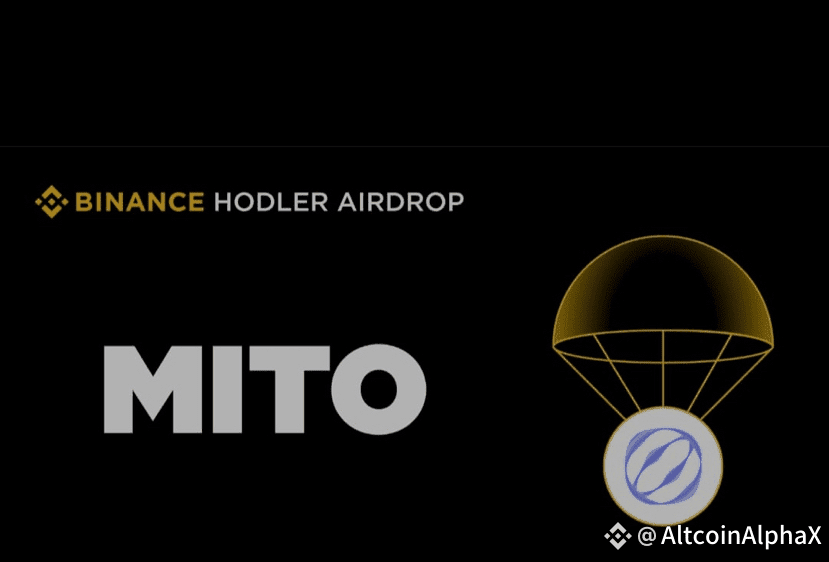As blockchain technology evolves, one challenge remains constant how to enable seamless, secure liquidity movement across chains without relying on centralized bridges. Mitosis is solving this problem through a revolutionary design built for the modular Web3 era. Its campaign on Binance Square shines a spotlight on this innovative protocol that redefines how liquidity, interoperability, and scalability function across decentralized ecosystems.
@Mitosis Official | #Mitosis | $MITO
The Vision of Mitosis:
The vision behind Mitosis is clear and ambitious: to build a liquidity-sharing layer that powers a unified Web3 ecosystem without the risks and inefficiencies of traditional cross-chain bridges. In today’s blockchain environment, assets often remain siloed, limiting capital efficiency and user accessibility. Mitosis eliminates these silos by enabling liquidity to flow natively between modular blockchains, allowing protocols to interact effortlessly and securely.
By leveraging modular design, Mitosis brings together the best aspects of existing blockchain architectures high performance, security, and interoperability while addressing the long-standing issues of fragmentation. The project’s campaign on Binance Square is designed to help users and developers understand how this cross-chain liquidity innovation will reshape the foundation of decentralized finance.
Redefining Cross-Chain Liquidity :
Traditional bridges have been a bottleneck for Web3 adoption, often vulnerable to hacks and delays due to centralized control points and fragmented verification systems. Mitosis introduces a bridge-free architecture, where liquidity flows through shared cryptographic proofs rather than asset wrapping or lock-and-mint mechanisms.
This means users can move liquidity seamlessly across different modular networks without compromising security or waiting for slow finality confirmations. By relying on cryptographic trust and decentralized validation, Mitosis offers a faster, safer, and more efficient way to move capital across ecosystems a true leap forward in interoperability.
Modular Design: The Foundation of Mitosis:
Mitosis is built with modularity at its core. Unlike monolithic blockchains that combine execution, consensus, and data availability into one layer, Mitosis separates these functions to enhance performance and flexibility. This architecture makes it possible for the protocol to connect and interact with a variety of modular ecosystems such as Ethereum rollups, Celestia-based chains, and EigenLayer-powered networks.
The modular design not only improves scalability but also ensures long-term adaptability. As the blockchain industry transitions toward modular stacks, Mitosis positions itself as the liquidity backbone that connects these layers enabling value transfer, yield distribution, and data exchange without friction.
Shared Liquidity and Unified Value Layer:
One of Mitosis’s most transformative concepts is its shared liquidity layer. Instead of relying on wrapped tokens or fragmented pools, Mitosis establishes a unified value layer that allows liquidity providers to earn yield and access opportunities across multiple chains simultaneously.
For example, liquidity staked in one network can be instantly utilized in another, maximizing efficiency without requiring duplication. This shared pool mechanism drastically reduces slippage, minimizes risks, and enhances the overall capital efficiency of the decentralized economy. In essence, Mitosis creates an interconnected liquidity web — one that fuels growth across the entire modular blockchain ecosystem.
$MITO Token: Powering the Ecosystem:
The MITO token serves as the lifeblood of the Mitosis ecosystem. It plays multiple roles, from governance and staking to facilitating network fees and incentivizing validators. Through MITO, users can participate in decision-making processes, secure the network by delegating to validators, and access premium cross-chain liquidity services.
The token also underpins a decentralized reward economy that encourages active participation. Validators are rewarded for verifying transactions, developers earn incentives for building dApps on Mitosis, and liquidity providers receive yield for contributing capital to shared pools. MITO’s design ensures that value creation and distribution remain fair, transparent, and aligned with the principles of decentralization.
Security and Trust Through Cryptographic Proofs
Mitosis leverages advanced cryptographic verification to secure its cross-chain operations. By using zero-knowledge proofs (ZKPs) and modular restaking principles, it ensures that every transaction or liquidity transfer is verified without exposing sensitive data.
This cryptographic foundation replaces the reliance on centralized relayers and oracles that have historically been weak points in traditional bridging systems. The result is a trustless liquidity infrastructure, where users can move assets confidently knowing that every transaction is backed by mathematical proof rather than institutional guarantees.
Building for the Modular Ecosystem:
As Web3 evolves into a multi-chain, modular environment, Mitosis provides the missing piece a universal liquidity layer. Its infrastructure is designed to support interoperability among modular rollups, appchains, and layer-2 networks, ensuring smooth communication between them.
Developers can integrate Mitosis to enable cross-chain functionality within their applications, while users enjoy a unified interface for managing assets across ecosystems. This opens new possibilities for DeFi protocols, decentralized exchanges, and yield platforms, all powered by Mitosis’s frictionless liquidity model.
Ecosystem Growth and Future Potential:
The Mitosis campaign on Binance Square underscores the project’s growing ecosystem and its expanding role within the broader modular blockchain narrative. Through partnerships and integrations, Mitosis is steadily building the foundation for a decentralized liquidity economy that supports both institutional and retail adoption.
Its unique architecture allows it to scale alongside other modular projects, ensuring relevance and compatibility in the years to come. The campaign invites developers, investors, and users to participate in this evolution, positioning Mitosis as not just another protocol but as a core infrastructure layer for the next generation of Web3 applications.

Conclusion:
The Mitosis campaign on Binance Square captures the essence of what the future of Web3 liquidity looks like decentralized, modular, and trustless. By eliminating the need for traditional bridges, introducing a shared liquidity layer, and leveraging cryptographic validation, Mitosis represents a true paradigm shift in blockchain interoperability.
Through its campaign, Mitosis encourages the global community to imagine a world where assets move freely across chains, liquidity flows without barriers, and developers build without constraints. It’s not just a vision for the future it’s a transformation that is already underway.


